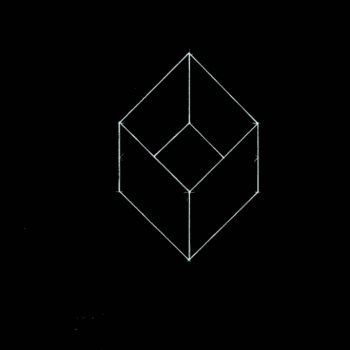We begin with #y=3(x+1)^2+4x^2+3x#. This is in neither standard form nor vertex form, and I always prefer to work with one of those two forms. So, my first step is to convert that mess above into standard form. We do that by changing the equation until it looks like #y=ax^2+bx+c#.
First, we deal with #(x+1)^2#. We rewrite it as #(x+1)*(x+1)#, and simplify using distribution, all of which gives us #x^2+x+x+1#, or #x^2+2x+1#.
Now we have #3(x^2+2x+1)+4x^2+3x#. If we simplify #3(x^2+2x+3)#, that leaves us with #3x^2+6x+3+4x^2+3x#. Now we can combine like-terms. #3x^2+4x^2# gives us #7x^2#, and #6x+3x# equals #9x#. Now we have #7x^2+9x+3#, which is in standard form. Don't get too comfortable though, because we'll be converting that into vertex form in just a minute.
To solve for vertex form, we're going to complete the square. We could also use the quadratic formula or graph the equation we have now, but where's the fun in that? Completing the square is more difficult, but it's a method worth learning because it is fairly quick, once you get the hang of it. Let's get started.
First, we need to get #x^2# by itself (no coefficients except for the number #1# allowed). In our case, we need to factor a #7# from everything. That gives us #7(x^2+9/7x+3/7)#. From here, we need to take the middle term #(9/7x)# and divide the coefficient by #2#, which is #9/14#. Then we square that and we have #81/196#. We add that to our equation, like thus: #7(x^2+9/7x+81/196+3/7)#.
WAIT!!! We just stuck a random number in the equation! We can't do that! How can we fix this? Well, what if we just... subtracted the number we just added? Then the value hasn't changed #(81/196-81/196=0)#, so we haven't broken any rules, right? Okay, let's do that.
Now we have #7(x^2+9/7x+81/196-81/196+3/7)#. Okay, we're good now. Still, we should keep simplifying, because #7(x^2+9/7x+81/196-81/196+3/7)# is long and cumbersome. So, #-81/196+3/7# is #3/196#, and we can rewrite #x^2+9/7x+81/196# as #(x+9/14)*(x+9/14)#, or #(x+9/14)^2#. You might be wondering why I didn't combine #3/196# with #81/196#. Well, I want to create a perfect square, like #(x+9/14)^2#. That's actually the whole point of completing the square. #x^2+9/7+3/7# wasn't factorable, so I found the number ((9/2)/2^2) that makes it factorable. Now we have a perfect square, with the inconvenient, imperfect stuff tacked on at the end.
So, we now have #7((x+9/14)^2+3/196)#. We are almost done, but we can still do one more thing: distribute the #7# to #3/196#. That gives us #7(x+9/14)^2+3/28#, and we now have our vertex! From #7(x+color(green)(9/14))^2color(red)(+3/28)#, we get both our #color(green)(x)#-value and our #color(red)(y)#-value. Our vertex is #(color(orange)(-)color(green)(9/14), color(red)(3/28))#. Please notice that the sign of the #color(green)(x)# component is opposite of the sign within the equation.
To check our work, we can just graph the equation and find the vertex that way.
graph{y=7x^2+9x+3}
The vertex is #(.643,.107)#, which is the rounded decimal form of #(-9/14, 3/28)#. We were right! Great job.

